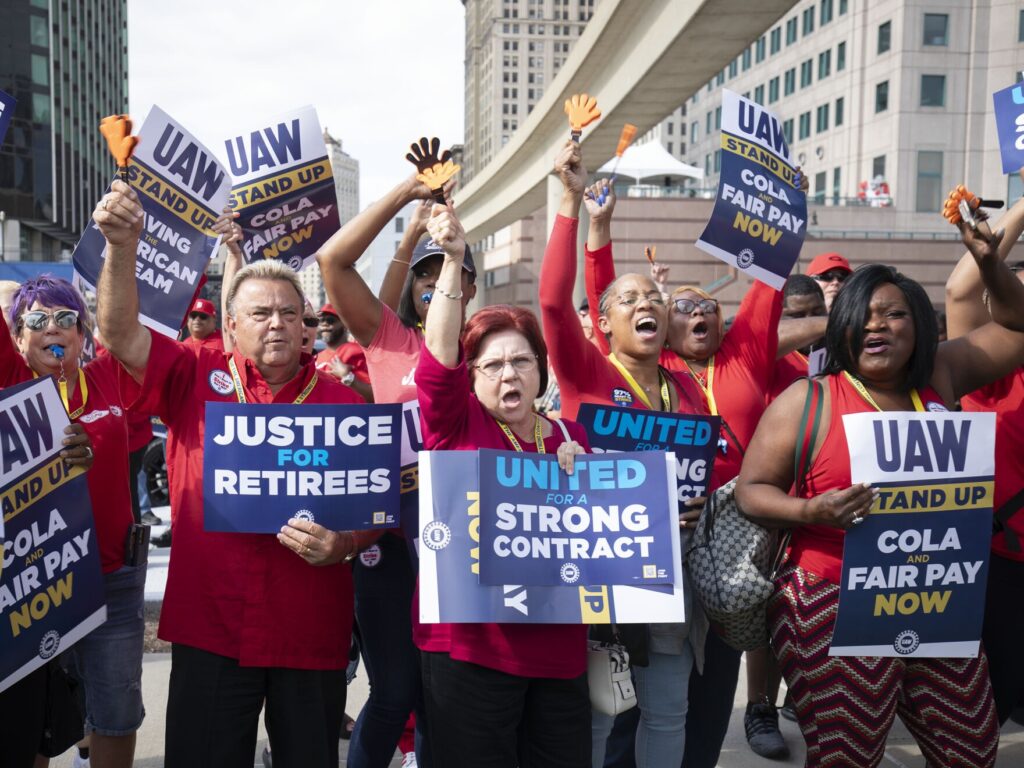Introduction
The United Auto Workers( UAW) union has long been a important force in championing for the rights and interests of American bus assiduity workers. With a history gauging further than 85 times, the UAW has played a vital part in shaping labor relations, pay envelope norms, and working conditions across the automotive sector. In recent times, the union has faced multitudinous challenges, including shifting assiduity dynamics, evolving worker requirements, and heightened pressures with major automakers. This composition provides a comprehensive look at the rearmost developments in UAW news, fastening on recent accommodations, labor strikes, and the broader counteraccusations for the automotive assiduity and its pool.
Recent Negotiations and Labor Actions
Contract Talks with Major Automakers
One of the most significant recent events involving the UAW has been its contract accommodations with the Big Three automakers — General Motors, Ford, and Stellantis( formerly Fiat Chrysler). These accommodations are critical, as they set the norms for stipend, benefits, and working conditions for knockouts of thousands of workers. The UAW has been pushing for substantial pay envelope increases, bettered job security, and better healthcare benefits, while the automakers have expressed enterprises about the fiscal viability of similar demands, especially in a fleetly evolving assiduity where electric vehicles and robotization are reshaping the geography.
Strikes and Worker Solidarity
In response to stalled accommodations, the UAW News has not dithered to authorize strikes, a traditional but important tool in labor relations. Strikes have historically been a means for workers to apply pressure on employers to meet their demands, and recent conduct have underlined the union’s amenability to engage in direct battle when necessary. The impact of these strikes is far- reaching, not only affecting product lines but also signaling to the broader assiduity the soberness of the union’s station. Worker solidarity has been a crucial factor in these conduct, with members showing strong support for the union’s leadership and objects.
Challenges Facing the UAW
Industry Transformation and Job Security
The automotive assiduity is witnessing a significant metamorphosis, driven by the shift toward electric vehicles( EVs) and increased robotization. These changes pose both openings and pitfalls for UAW members. While the transition to EVs could produce new jobs, particularly in battery manufacturing, it also threatens to reduce the overall number of jobs due to the simpler manufacturing processes involved in EV product. The UAW News has been oral about the need to cover being jobs and insure that new jobs created in the EV sector offer the same position of pay and benefits as traditional bus manufacturing places.
Internal Union Dynamics
Internally, the UAW News has faced its own set of challenges, including leadership changes and sweats to rebuild trust after a series of corruption dishonors in recent times. These issues have urged calls for lesser translucency and responsibility within the union. The current leadership has made sweats to address these enterprises, but the heritage of once dishonors continues to cast a shadow over the union’s operations. How the UAW navigates these internal dynamics will be pivotal in maintaining its credibility and effectiveness as a representative body for bus workers.
Broader Implications for the Automotive Industry
Impact on Automakers
The UAW News conduct and accommodations have significant counteraccusations for the automakers themselves. Dragged strikes or failure to reach favorable agreements could disrupt product schedules, lead to fiscal losses, and affect the companies’ capability to contend in a global request that’s decreasingly concentrated on invention and effectiveness. Automakers are also under pressure to balance the demands of their pool with the need to invest in new technologies, similar as EVs and independent vehicles, which bear substantial capital disbursement.
Influence on Labor Movements
The UAW News conditioning also reverberate beyond the automotive assiduity, impacting labor movements across other sectors. As one of the most prominent unions in the United States, the UAW’s successes and challenges can inspire or advise other unions in their own accommodations and labor conduct. The issues of the UAW’s current sweats may set precedents for how other unions approach issues similar as pay envelope accommodations, job security in the face of technological change, and the use of strikes as a logrolling tool.
The Future of the UAW
Strategic Priorities
Looking ahead, the UAW News faces the task of conforming to an evolving assiduity while continuing to endorse effectively for its members. This will probably involve a combination of aggressive logrolling for better stipend and benefits, strategic alliances to impact assiduity norms, and sweats to insure that the transition to new technologies does n’t come at the expenditure of workers’ livelihoods. The union’s capability to remain applicable and influential in this changing terrain will depend on its leadership’s vision and the solidarity of its members.
Potential Outcomes
The issues of the UAW News current accommodations and conduct will have lasting goods on both the union and the broader assiduity. Successful agreements that address worker enterprises could strengthen the union’s position and enhance its character, while failure to secure favorable terms could lead to increased pressures and a implicit decline in class. The UAW’s future will be shaped by how well it can navigate these challenges and seize openings in an assiduity that’s at a crossroads.
Conclusion
The United Auto Workers union remains a redoubtable force in the American labor geography, with its recent conduct and accommodations pressing both the challenges and openings facing the automotive assiduity. As the assiduity continues to evolve, the UAW’s part in championing for workers’ rights and shaping the future of labor relations will be more important than ever. The union’s capability to acclimatize to new realities while maintaining its core charge of guarding workers will determine its unborn success and influence in the times to come.


